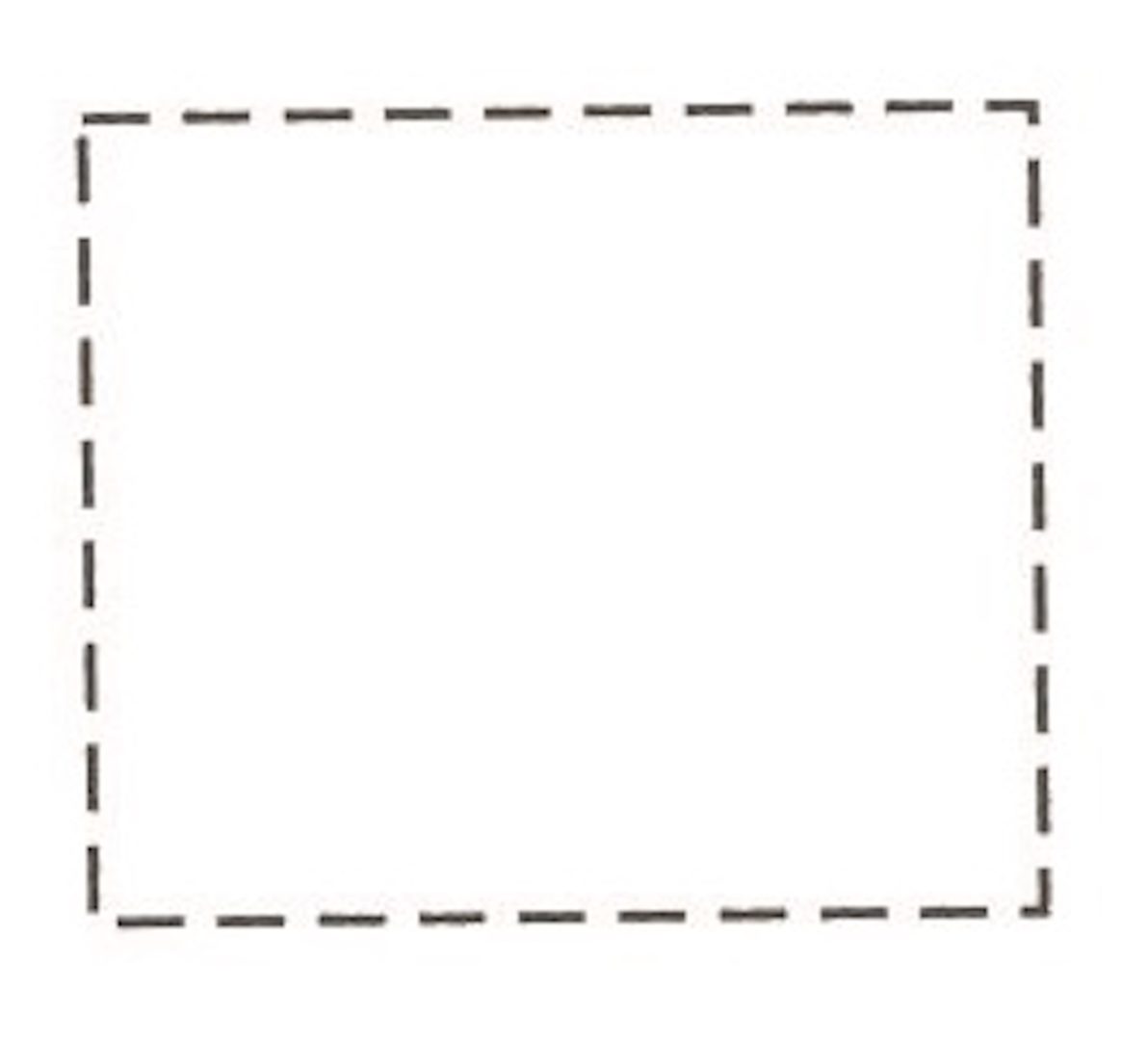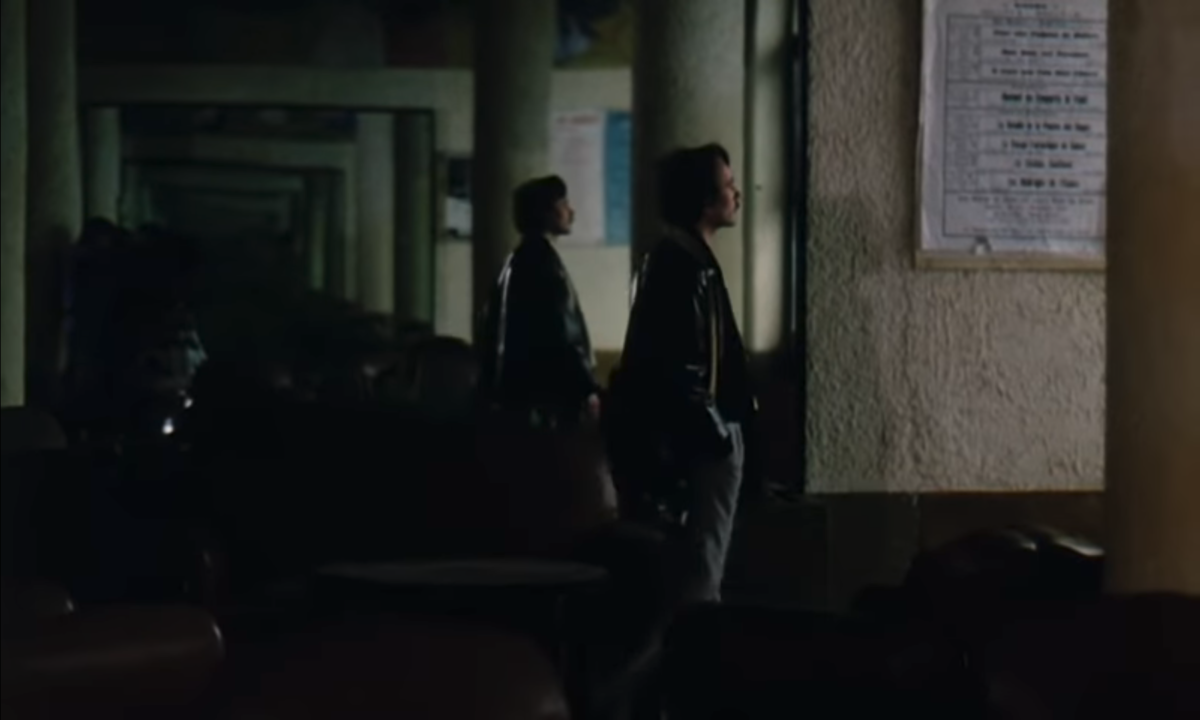Maybe you know me well. Perhaps we have never met. I have written a text of your absence.
In filmmaking, images concrete and abstract are often deployed to communicate those ethereal notions which come with being alive; sometimes images (especially silent ones, though it’s a more delicate business) are used to express emotion. In music, instrumental tracks also seek to touch us in some way, to communicate what cannot be said in concrete terms. Music, both structured and ambient, remains abstract on its own, though its organization in sticking within a certain key for the duration of a song can implicitly tie it to predominantly positive or negative (major or minor) moods. In 1981, with L’Homme atlantique, Marguerite Duras managed to use words in a more abstract sense, and reach us emotionally, simultaneously through and apart from her narration’s literal denotations.
Finding yourself in a hole, at the bottom of a hole, in almost total solitude, and discovering that only writing can save you. To be without the slightest subject for a book, the slightest idea for a book, is to find yourself, once again, before a book. A vast emptiness. A possible book. Before nothing. Before something like living, naked writing, like something terrible, terrible to over-come.
— Marguerite Duras, Écrire
Duras directed (and narrated) five films shorter than an hour, and all within the span of four years: two pairs—Césarée and Les Mains négatives in 1978, followed by Aurélia Steiner (Vancouver) and Aurélia Steiner (Melbourne) in 1979—which laid the groundwork for a fifth masterstroke, L’Homme atlantique. Although she lived until 1996, she only directed two projects after it, and there is an unmistakable sense of finality that permeates Atlantique—three quarters of which features a black screen. The footage which punctuates the black screen of L’Homme atlantique is taken from Agatha et les lectures illimitées, also from 1981. With these films, Duras essentially poses the question of whether one can receive a full story only from the detailed context but without the simple facts—a film without the images of the drama, only snapshots of the effects, of the emotions stirred.
In Césarée, Duras deals with the negative space of history—even if we visit the same spaces once claimed as the Roman Empire, we can never see the people as they were at that time. We are left instead with their statues, seen in the Tuileries Garden, rather than in modern day Caesarea. Les Mains négatives presents us a roving view of Paris as filmed from a car, which may very well have had an influence on the opening of Daniéle Huillet and Jean-Marie Straub’s Trop tôt/Trop tard (1981), or even Jacques Rivette’s Le Pont du Nord from the same year. It’s a Paris without people—the negative space of their absences. And while roving the Seine, Aurélia Steiner (Melbourne) closes with three versions of negative space: the underside of the bridge, the sky above, and finally a tilt down into the water of the river, all in the deep blue of evening, not so unlike the color which pervades Yann’s view out the window in L’Homme atlantique. In Aurélia Steiner (Melbourne), our narrator makes reference to “liquid eyes”. In L’Homme atlantique, she revisits and expands this descriptor as “the liquid crystal of your eyes”. If our eyes are liquid, do they take in light or merely reflect it? Does darkness offer an opportunity for true absorption instead? Duras tells us it does, yet this taste of the truth comes at the price of sitting alone in that darkness. To know ourselves, we must be alone with our selves.
The person who writes books must always be enveloped by a separation from others. That is one kind of solitude. It is the solitude of the author, of writing.
— Duras, Écrire
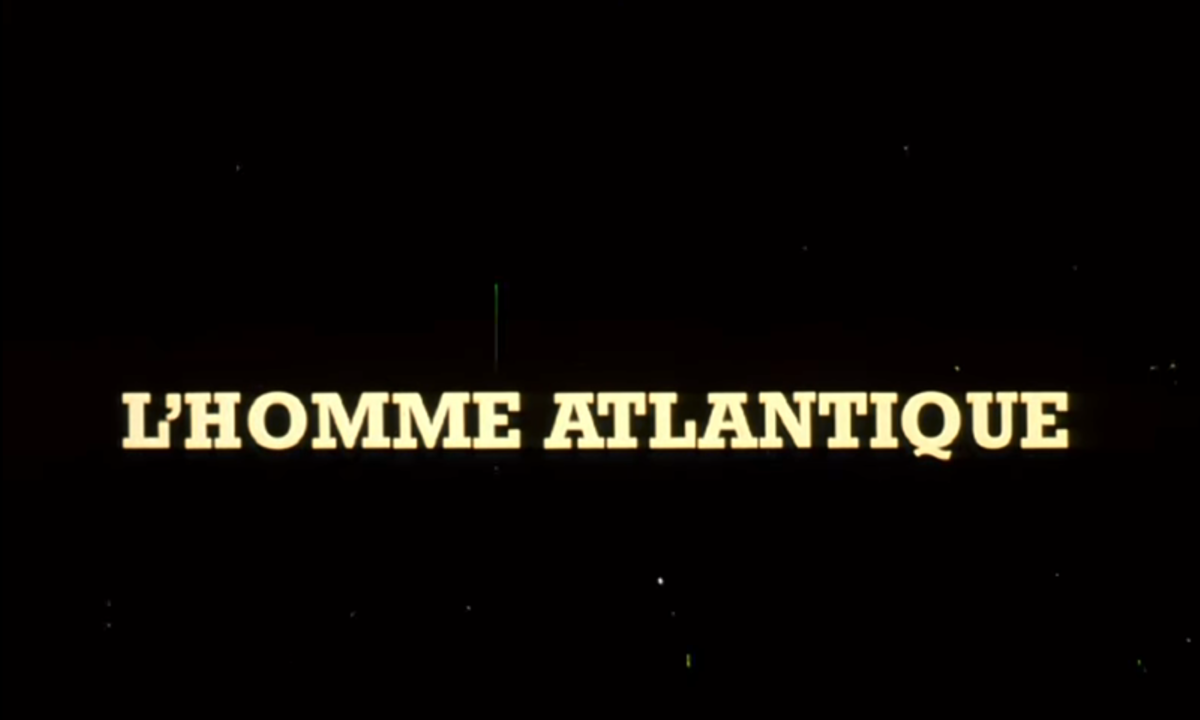
Following three flashes of the title card, ‘L’HOMME ATLANTIQUE’, we dive into darkness and Duras’s self-reflexive intentions are immediately apparent: “You will not look at the camera. Except when you are told to. You will forget. You will forget. You will forget that this is you. I believe it is possible. You will also forget the camera. But above all, you will forget that this is you. You. Yes, I believe it is possible.” In her repetitions, these possibilities seem to develop into incantations, spells cast in the dark. Despite the absence of photographic images on the ‘empty’ screen, there is a continuous momentum lent to the unoccupied space by the scratches on the celluloid. Empty space comes to life. “A vast emptiness.” After a minute and a half, the darkness gives way to a man in profile, angled away from us, looking out the window into the ultramarine of nightfall. He turns slightly toward us, but his gaze falls elsewhere.
The man is Yann Andréa, who became Duras’s muse after his many attempts at correspondence were met with an answer after five years, which developed into an epistolary relationship. She was 38 years his senior. They lived together for 16 years. He was born Yann Lemée, and she re-christened him Yann Andréa, taking his mother’s first name as his new surname. In 1992, Duras released a novel which tied his new name to her character Aurelia Steiner in its title, Yann Andréa Steiner. Thus, his existence was brought completely into the fold of all things Duras; a lanky mustachioed man and his tiny anti-matriarch. While there was no romance (in the traditional sense, as Yann was not of the hetero persuasion) involved, their relationship is one that only the two of them could ever fully comprehend. While the same is true of the connection between any two humans, it seems to have been the type of deep and unlikely bond that brought light and darkness into both of their lives; suffering inseparable from fulfilment. A friendship of shared solitude in front of a blank screen. Yann published six books in his lifetime, all of which deal with time spent with Marguerite—as if he had not lived before she entered his life, nor did he manage to after her exit.
“You will forget that this is you.”
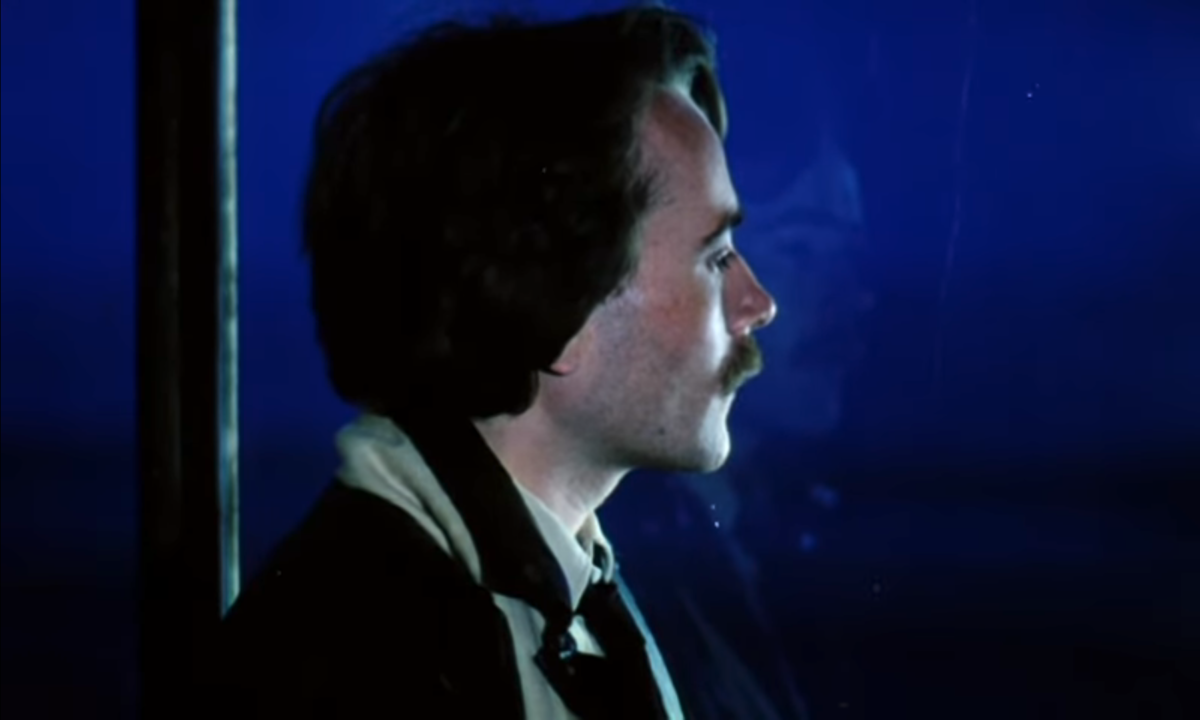
Not to respect the screen as its own self-symbol is to treat film as a medium for information. It is to say that the whole absorbing mechanism of projected light—the shots, the cuts, the actors—is there only to represent a scripted idea.
— Nathaniel Dorsky, Devotional Cinema
Yann walks, then the image resets. The aperture is adjusted, the picture grows ever so slightly brighter, and when we return to the mirror, this time the camera is visible on its tripod, and Yann is on the opposite wall, walking in front of another mirror. He toes the line between infinite dimensions on either side of him. He is present in all of them. “You will turn right and walk along the window-panes and the sea,” Duras commands him. He returns in front of the camera, this time equidistant from the camera and mirrored wall, then turns to look straight into the lens. “You are on the edge of those things trapped among themselves by your look.”
This very scene is described later in darkness by the narration:
“You will pass once again in front of the camera. This time you will look at it. Look at the camera. The camera will now capture your reappearance in the mirror parallel to that in which it sees itself. Don’t move. Wait. Don’t be surprised. I’ll tell you this: you will reappear in the image. No, I didn’t warn you. Yes, it will happen again.”
One wonders if Duras sees herself here. I’m certainly made to see myself. Yann sees himself, or perhaps he merely sees a role. I see my self—consumed in the drafting and re-drafting of this piece. Though I cannot physically alter the text on my computer screen, the material keys deliver the words for me.
While the text of the narration is nearly impossible to fully absorb on first listen, it is deeply felt. When Yann appears, it is not in the role of the character he plays in Agatha et les lectures illimitées, nor is he Yann Lemée—he is Duras’s Yann Andréa, an individual unknowable to outsiders. When we see his body on screen, we can only register the manifestation of the connection between author and muse. Though we are made to feel their connection by a literal depiction of his existence narrated by the author’s omniscient commentary, we cannot see their emotional connection. The blank screen is not a metaphor. It is a means of forcing us into solitude with the author, into experiencing that which cannot be experienced except in solitude.
For Duras, reading, writing, creativity, and contemplation are all inseparable from (and in some sense carry within them) darkness:
…maybe one always reads in the dark; the place where we speak, I call it the darkroom. I say: reading room, or darkroom. It seems to me that language’s power would have been dissipated under the light of day. Reading is a function of obscurity, of night. Even if we read in the middle of the day, outside, around the book, there is night.
— Duras, The Darkroom
A darkroom where ideas are developed from blank sheets into fully fledged dialogs.
A darkroom where the abstract is rendered material.
Proof of the paradox that one needs light and dark alike in order to develop anything – a light to expose the truth, and a darkness in which to process it.
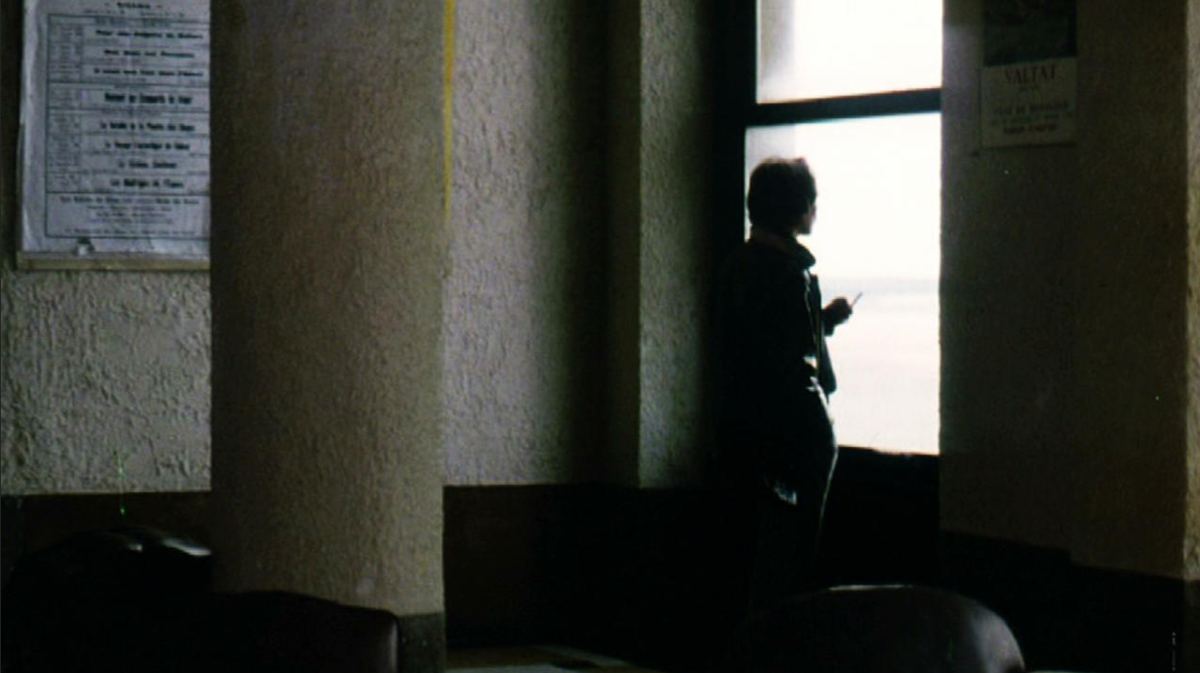
…the photochemical imprint is not an illusion, it is a simple material, not materialist, process. It formulates a grained image in the emulsion of film, subsequently projected by a physical light beam onto a light surface, the screen.
Such formulations could lead LeGrice, for example in the late 1960s, to realize that a film in which a section goes so dark as to be nearly indecipherable may simultaneously demand of the viewer the will and need to see, to decipher. Unable to do so, to make active the viewer’s perceptive processes, whilst simultaneously positioning him/her as impossible in relation to any ‘truth’ of image. Representation as representation.
— Peter Gidal, Materialist Film
As early as 1930, Frankfurter Walter Ruttmann (who within the next five years would co-write and assist on Triumph des Willens) had attempted an image-less film with Wochenende (Weekend), which consisted only of a musique concrète collage of sound recordings taken around Berlin on a Sunday, played alongside a blank screen. Yet Wochenende did not even have empty celluloid running with its soundtrack—it was a film without film; a film that could not be seen, only heard. It was considered a lost film until its discovery in 1978. One wonders if Duras heard this film.
The cinema screen can never act as a literal mirror (Guy Sherwin performances aside), so negative space acts as a darkness in which we can better see ourselves. When we see Yann
Andréa, he stands in for us, or someone from our own lives, a significant relationship which cannot be done justice by words alone. It is Duras herself who narrates, and her direct address is simultaneously for us, for herself, for Yann.
It is a play with time and ontology through this direct address that brings to mind a work which came two years later: Joseph Bernard’s short, Film for Untitled Viewer (1983), in which lively yet short phrases of printed text ‘speak’ directly to the viewer in total silence. And although different for its inclusion of voiceover, the flashes into and out of a dark screen and silence of L’Homme atlantique bring to mind the work of Edward Owens, especially Tomorrow’s Promise (1967), a 45-minute meditation primarily dealing with the negative space of an empty screen. In that film, Owens builds upon his teacher Gregory Markopoulos’ ideas of depicting negative space. On his own use of black celluloid in Twice a Man (1963), Markopoulos noted: “I have been duly influenced by the notion of chaos; the formless void so aptly proposed by mythology and out of which all existing things were brought into being.” (Film as Film). Finally, Duras’s shuffling of corresponding voice and image to different temporal points in the film recalls Hollis Frampton’s (nostalghia) (1971)—in L’Homme atlantique what we hear often relates more closely to what we have already seen than what we are currently being shown. Furthermore, Frampton’s film engages in a similar play of uncertain identities: (nostalghia) narrates the stories of photos taken by Frampton in the first person, yet the voice providing this narration (which one would naturally assume to be the voice of the photographer) is actually that of his fellow structuralist filmmaker Michael Snow.
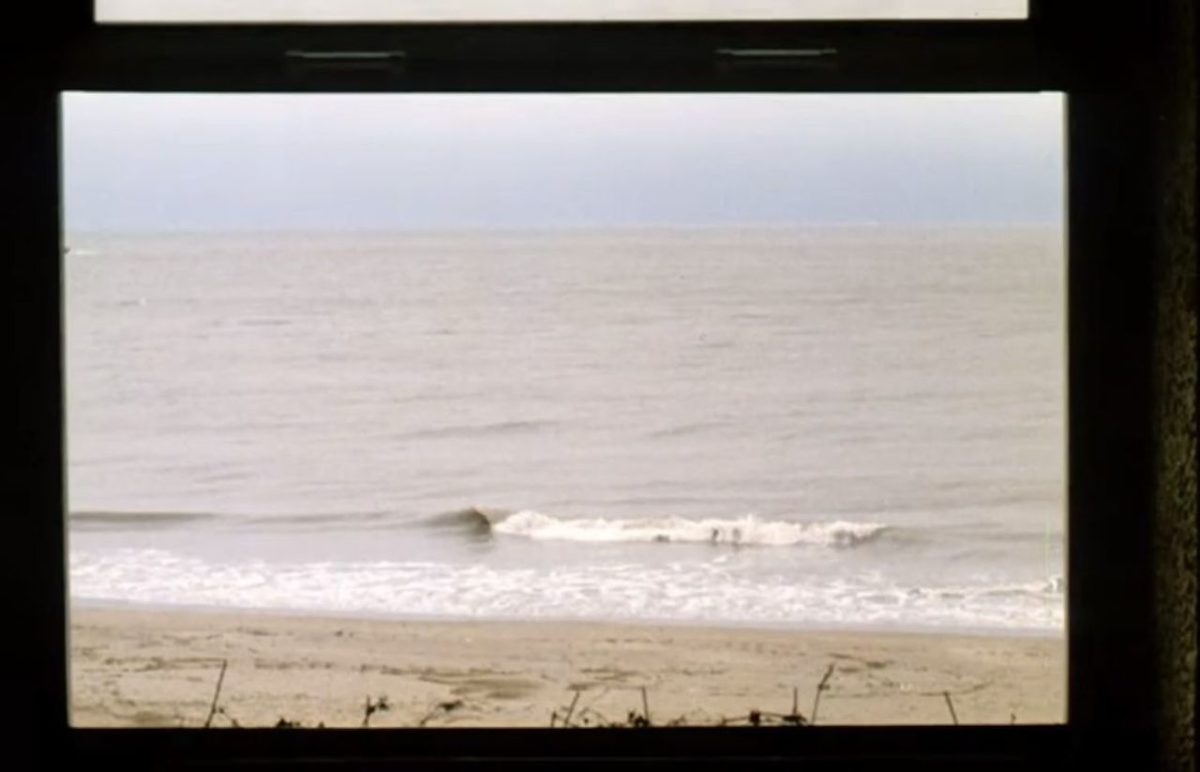
For alchemy to take place in a film, the form must include the expression of its own materiality, and this materiality must be in union with its subject matter. If this union is not present, if the film’s literalness is so overwhelming, so illustrative, that it obliterates the medium it is composed of, then one is seduced into a dream state of belief or absorption that, though effective on that level, lacks the necessary ingredients for transmutation. Such a film denies its totality. It denies the fact of what it is actually made of.
—Nathaniel Dorsky, Devotional Cinema
L’Homme atlantique is arguably that rare film which seduces us into a dream state of absorption while still expressing its own materiality: the screen crackles light scratches on its empty images, an admission of the material to which its physical existence is bound, in perfect harmony with its subject matter of time in the dark—and yet we are held in a perfect trance, though not one of illusion but of self-examination, a meditation, a search for deeper truth.
“Listen,” we are told in what is otherwise absolute silence.
We watch waves lap at the shoreline through a window frame.
“You have left the camera’s field of view,” we are told, once again in total darkness.
This time we hear the waves lapping at the shore.
“or this abandoned hotel, or these sands.”
We see the waves through the window again, once again silent.
“Writing would be too difficult from now on. Why not a film?”
“I told myself I would love you,” she continues.
And finally, the heart of the matter: “I have made a film out of your absence.”
Could a film of your absence be a possible book?
“A vast emptiness.”
